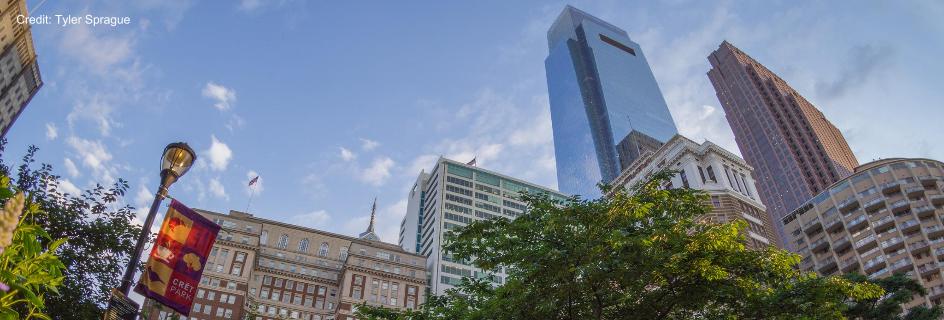- About GPA
- Global Events
- GLOBAL NEWS FROM PHL
- Global Directory
- World Heritage City
- Sustainable Development Goals (SDGs)
- Global Philadelphia Role on Sustainable Development Goals
- Completed Sustainable Development Goals
- SDG#1: No Poverty
- SDG #2: Zero Hunger
- SDG#3: Good Health & Well-Being
- SDG#4: Quality Education
- SDG#5: Gender Equality
- SDG#6: Clean Water & Sanitation
- SDG#7: Affordable and Clean Energy
- SDG #8: Decent Work and Economic Growth
- SDG #9: Industry, Innovation, and Infrastructure
- SDG#10: Reduced Inequalities
- SDG#11: Sustainable Cities and Communities
- SDG#16: Peace, Justice and Strong Institutions
- SDG#17: Partnerships for the Goals
- Press
Home ›
PIFA Explores the Fall of the Berlin Wall and the Effects of Unification
Posted on April 15, 2013

Kait Lavinder, for GPA -- For the 2013 Philadelphia International Festival of the Arts (PIFA), three remarkably talented men embraced the opportunity to collaborate on a monumental work of art: “Fall of the Berlin Wall: Beethoven’s 9th Symphony.”
International traveler and American photographer James B. Abbott goes by the nickname “Jim.” Jim first became interested in the city of Berlin while studying at the Cranbrook Academy of Art in Bloomfield Hills, Michigan. During Jim's college days, his young architect friend used to tell Jim details of an on-going project he was working on in Berlin. This friend could not have known how impactful his Berlin transmittals would be to Jim’s future work.
A native of Dresden, part of Soviet-occupied East Berlin prior-1989, Jorge Cousineau is now an acclaimed theater artist in Philadelphia and works on everything from video design to music composition, to the invention and manipulation of special effects used in staged performances. He would not have predicted that over two decades after “der fall der Berliner Mauer” (the fall of the Berlin Wall) his vivid memories would be brought back to life.
Word renowned conductor and pianist Ignat Solzhenitsyn was born in Moscow and is now the Principal Guest Conductor of the Moscow Symphony Orchestra. In addition, he serves as the Conductor Laureate of the Chamber Orchestra of Philadelphia. Although not unfathomable that he would travel literally across the world for his career, he says he cannot believe he would ever conduct a show that mixed rock music with Beethoven’s Ninth.
When Ann Peltz, Program Director at the Center for Emerging Visual Artists (CFEVA) in Center City, Philadelphia, heard that PIFA was searching for entrants into its 2013 extravaganza, she immediately thought of CFEVA member Jim Abbott’s Berlin collection. Peltz explained that PIFA’s theme of time travel fits perfectly with photographer Jim Abbott’s work because, “Jim examines particular places for long amounts of time, one being Berlin.”
Abbott traversed Berlin, camera equipment in hand, three times before the Wall fell, four times between 1989 and 1992, and once twenty years later in August 2012. During his last visit, Abbott walked along the same route he had taken in the previous trips, but he says the transformations of the city were “radical.”
He elaborates, “That was the thing about Berlin - everything was a dead end . . . The Wall was a huge source of tension, even when I was there in the 90s.” Abbott looks almost quizzical when he describes the most enthralling change that occurred in Berlin during the 20 years he was absent: “I could not believe how carefree Berlin was.”
Soon after completing Abbott’s PIFA application, Peltz received a telephone call from a Kimmel Center representative who told her that the Chamber Orchestra of Philadelphia was already planning to compose a piece about the Berlin Wall. Conductor Laureate Ignat Solzhenitsyn wanted to commemorate the fall of the Wall by celebrating the ensuing freedom through music.
Hence came the final proposal: a multi-media performance set to the musical masterpieces of Klaus Meine, Mikhail Dmitrievich Smirnov, and Ludwig van Beethoven and accompanied by projected photographs of the Berlin Wall. The event was to take place at the Kimmel Center’s Verizon Hall on April 7, 2013.
To assist in preparing the video reel of photos for the concert, Abbott and Cousineau, the German theater artist, joined forces to produce the images that would be shown on two large screens hovering over stage right and stage left. Cousineau nostalgically expressed that the process of sifting through the enormous stock of photos was at times overwhelming. But he added, “It was really a great opportunity to work with my own past.”
Abbott’s and Cousineau’s work culminated in the video displays exhibited during the Chamber Orchestra of Philadelphia’s performances of Meine’s Wind of Change (1990) and Smirnov’s Epitaph for the Victims of Communism (2000.) The former was written and first played by German heavy metal band Scorpions. It quickly became the unofficial anthem of German reunification, as well as an expression of the yearning for freedom felt by both East and West Berliners. The latter acts as a tribute to those who never had the opportunity to experience freedom.
The grand international collaboration of Abbott, Cousineau, and Solzhenitsyn concluded in a magnificent celebration of joy, brotherhood, and freedom with Beethoven’s Symphony No. 9 in D Minor, Op. 125, “Choral” (1811-1824,) which was chorally accompanied by the Mendelssohn Club of Philadelphia. Solzhenitsyn says this symphony was chosen, in part, because of its symbolic association with the fall of the Wall; the symbolism stems from the December 25, 1989 Leonard Bernstein concert in Berlin, in which Symphony No. 9 was performed.
The unification of East and West Berliners is a triumphant moment in time that represents freedom from oppression and the good that results fromreconciliation. Similarly, the amalgamation of Abbott, Cousineau, and Solzhenitsyn and of each man’s distinctive art form exudes the best of international artistic inspiration.
Author Kait Lavinder can be reached at kaitlavinder.wordpress.com
Image courtesy of www.pifa.org








